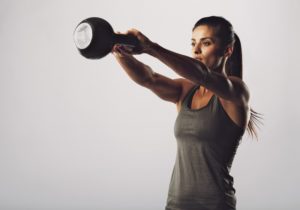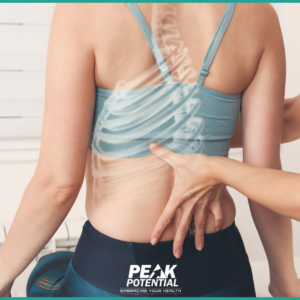Whether you work out at a gym, box, or your own garage, there are areas of your body that must move correctly and adequately for you to perform at your best.
We see 5 common areas of tightness and movement limitation in our clients . . . the usual complaint is “I feel tight”. Sometimes this is accompanied with pain or just noticing lifts and movements aren’t progressing as well as expected.
First, let’s establish that muscles don’t get tight for no reason. It’s usually because they are compensating for a weakness in another muscle or they are shortened due to our lifestyle (such as prolonged sitting). You can correct the tightness by improving the movement that occurs in the joint and length of the tight muscle.
The following 15 mobility exercise have one thing in common. . . they all work! Some may seem difficult, but others appear too simple to do the job. Remember that small hinges swing big doors! It’s often the simplest advice and changes that win in the end.
1. Upper Back
- Place a band on a bar or ring at shoulder height, with your back to it and arm stretched out to the side, step forward until you feel a stretch in your chest muscles.
- Place the band overhead, sit back on your heels with your arm stretched upward to feel a stretch in your lats (along the sides of your back).
- Lie on your side with the bottom arm straight out in front of you. Bend the elbow to 90 degrees, use the top arm to gently try to push the palm of the bottom arm toward the floor.
2. Shoulders
- Use a foam roller or tennis ball to massage your upper back muscles.
- Get into a full squat position, place one hand on the ground and try to rotate the other arm toward the ceiling.
- In a kneeling position arch your upper back backwards, or lay backwards over a ball.
3. Hips
- Lie on your back with your backside against the wall. Place your feet on the wall, simulating a full squat position. Hold here for 2 minutes.
- With a wide stance, bend forward at your hips. Place one hand or fingers on the floor and rotate your body to direct the other hand toward the ceiling.
- In a half kneeling position, keep your body upright and squeeze your buttocks underneath of you. Push your hips forward until you feel a stretch in the back leg.
4. Knees
- Roll out the muscles in your thighs and calves with a foam roller.
- Facing a wall, flex your foot and position your toes on the wall with heel as close to the wall as possible. Keep your heel on the ground and leg straight while you lean forward.
- Lie on your back with your knee pulled toward your chest and hands behind your thigh supporting the leg. Slowly straighten the knee until a stretch is felt in the back of the thigh.
5. Ankles
- Kneel with the tops of your feet on the floor. Sit back on your heels and hold this position. Feel a stretch on the front of your ankles.
- Roll a ball across the muscles of the front and back of your lower leg.
- Get in a downward dog position (hands and feet on the floor with buttocks pushed toward the ceiling), with one ankle crossed and resting behind the other. Just hold this position or for an advanced version try to touch your knee down to the ground and then straightening up again. Try to touch your heel down to the ground when your knee is extended.
There are 5 key areas that need to move better for better performance. Pick one body part each day and try the exercises. The areas that you have most difficulty with are likely what’s limiting you the most. Incorporate those specific activities several times a week to see the best improvement.
If you don’t see a significant change in your pain, stiffness, and/or performance after trying these stretch, you need to dig deeper to the root of your problem. Your fastest route is an assessment by a physical therapist. This movement specialist can quickly identify your weak points. . . frequently inadequate core stability, muscular weakness, poor alignment, inadequate more control, or combination of these.
Discuss your specific concerns and goals with one of our doctors of physical therapy today by filling out this quick form, with no obligation to come in for a session.




